
views
Checking for Symptoms

Ask what symptoms the child has. Children who describe vague symptoms that move from one body part to another without discretion are often faking. If, on the other hand, their symptoms are concrete and typically go together—like a runny nose and a sore throat, or stomach pain and diarrhea—that’s not a red flag. Ask your child twice for their symptoms. If they change up their complaints the second time, they're most likely faking and forgot the symptoms they made up the first time. There are certain conditions that make a person think they’re sick even when they aren’t, like hypochondria. Disorders like anxiety and depression can also cause physical symptoms like headaches, stomachaches, and vomiting. People with hypochondria aren’t faking sick, they’re just sensitive to little things like a small cough or a headache.
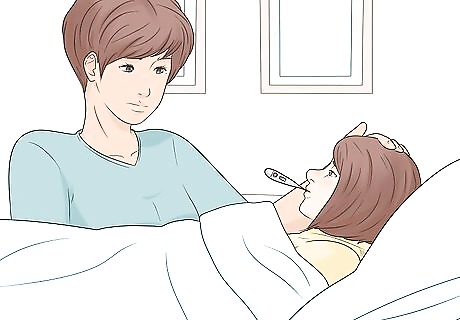
Check their temperature. Don’t leave the room after handing your child the thermometer. Many children have gotten out of going to school by running the thermometer under the hot tap or holding it up to a hot lightbulb. Take their temperature a second time a few minutes later. It is extremely hard to keep a fake fever going when they've used a hot towel or drank a warm beverage. This is a great tactic to use. If a child’s temperature abruptly changes in a matter of minutes, they were most likely faking it.
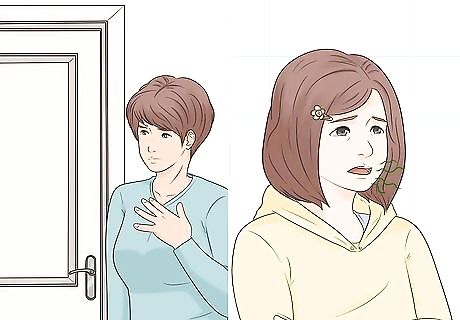
Listen for the sound of vomiting and check for the smell of vomit. If your child says they've been throwing up, you will probably be able to hear and see it. Also, if you smell air freshener in the bathroom after your child claimed they just threw up, it’s possible that they might be trying to cover up the “smell” that’s not really there. This is a sign that they faked throwing up.

Look for clammy skin. Does your child look pale and clammy? Clammy skin is caused by a number of factors, including allergic reaction, severe pain, anxiety, dehydration, and pneumonia. It's also hard to fake, so if a kid's skin is clammy, they probably aren't faking (whether they actually are sick, or have mistaken an allergic reaction, anxiety, or dehydration as a sickness)
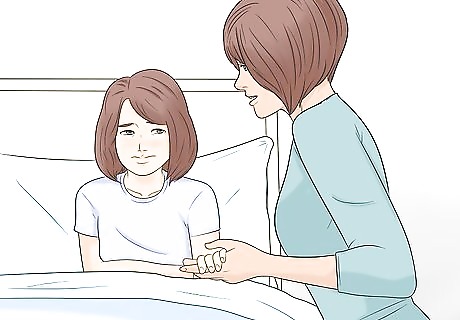
Ask if you can touch their tummy. Sometimes children complain of a belly ache. If they won’t let you touch their tummy and refuse to eat or drink, they may be having abdominal pain. Abdominal pain can be caused by constipation, viral infections, and occasionally something more serious. Call your doctor if your child has prolonged abdominal pain.

Check their eyes. If your child's eyes look red, pink, or watery, ask them if their eyes are bothering them. While it could just be allergies, if it looks crusty, it might be pink eye. If your child has pink eye, take them to the doctor. This viral infection can be very contagious. If the eye irritation is not accompanied by crustiness, happens around the same time every year, and is accompanied by watery eyes, a runny nose, and/or sneezing, it's probably just allergies. Likewise, the tendency to have allergies is often genetic, so if one or more family members have allergies, this could be the reason behind the child's eye irritation.
Observing Energy Levels

Suggest going to the doctor or taking medicine. Even those children who don’t like doctors or medicine will agree to do whatever they need to in order to feel better. If your child refuses care, it’s probably because they don’t need it! If your child is faking sick, they may not want to see the doctor because they will be afraid that the doctor will catch them faking. Although it’s important to know that a lot of kids don’t like going to the doctor, so if your child refuses going to the doctor it doesn’t always mean they’re faking their illness. Same goes for the medicine. Lots of kids hate taking medicine because it doesn’t taste good, so they may not want to take medicine whether they’re faking it or not.
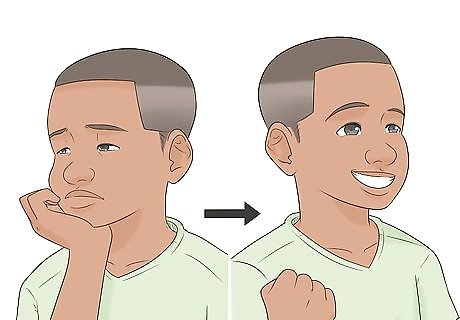
Notice if your child appears excited to stay home. If they went from droopy-eyed to bright-eyed, they may be looking for a day catching up on “Arthur.” Keep an ear out for any mention of homework. If they squeal with delight at the thought of not having to do any today, this might be a sign that they are trying to avoid something. There are two reasons why being excited to stay home is a sign of deceit -- firstly, if they're excited to stay home, this means they're keen on the idea of staying home, so it may have been their plan all along. Secondly, a sick kid is less likely to be able to get excited than a healthy kid.
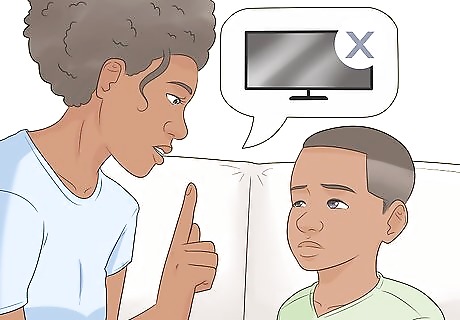
Restrict your child’s activities. Don’t incentivize staying home. If staying home sick means special treats and a day of television, they won’t mind falling behind in school. If you make staying home during a sick day boring, then they will be more motivated to go to school and not have as much of a motive to miss school. Sick days are meant for resting and recuperating, which can include watching television to entertain yourself during the process. However, if your child is extremely alert while watching T.V., instead of lying on the couch and watching through squinting, resting eyes, they may have another motive.
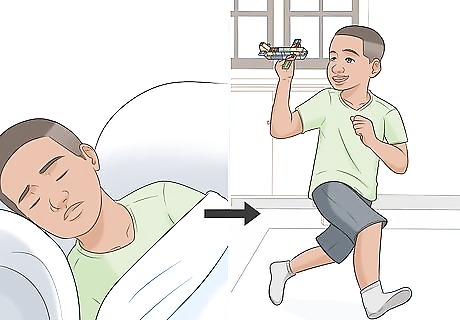
Notice if they have increased energy later in the day. So you said they could stay home, and after twenty minutes of extra sleep they're playing with LEGO and running around. Many kids who are faking sick get so excited about missing school that they can’t sit still and rest. They may not act ill when you’re not around, because they know they will only have to fake being sick around you. However, you’re the parent, you’re in charge, and you can stop this. They may have fooled you once, but they won’t fool you again.
Probing for Information About the School Day
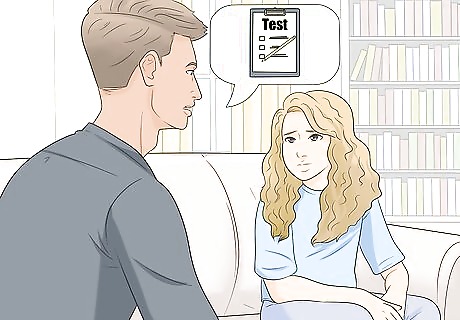
Ask your child what would be going on in school today. Take note if your child conveniently gets sick on the day of the US Constitution test. If they didn’t study enough, they might be trying for an extra day to cram. Or notice if they have a presentation due soon that they’ve been slacking off of, or if they have a lot of homework. If they're extremely nervous about a presentation or test, they might actually feel physically sick. Help them to pinpoint what they're nervous about and brainstorm solutions with them. Also, explain the difference between the kind of sick feeling that's caused by fear, and the kind that's caused by real sickness, so they'll be able to tell what's causing the feeling. Younger children don’t have the self-awareness to say, “I’m feeling anxious today.” If you've discovered that they're actually scared instead of sick, tell them it’s normal to feel scared, and see if you can help them through their fear.

See if your child is getting along with their teachers. Some kids really don’t click with their teachers. If your child is faking sick to avoid their teachers, this could become a pattern. If this is the case, you will need to speak directly with your child’s teacher to resolve the issue. Find out if other students are having a hard time with this particular teacher. If not, it may be a specific to your child’s learning style or personality.

Find out if your child is being bullied. Approximately 30 percent of students in grades 6-10 are affected by bullying. Understandably, those affected by it may choose to fake sick in order to bypass the jeering. In this case, it is important to get your child help and support. Bullying can really harm a child’s self esteem and cause emotional damage, so it’s really important to get them free from the bullying.
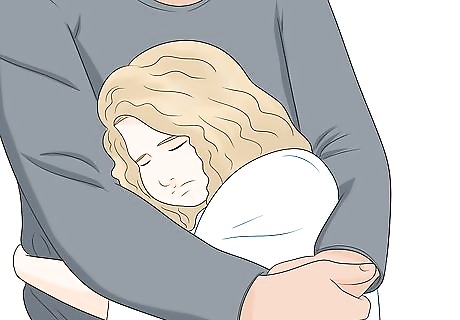
Consider undiagnosed conditions if this is a pattern. Kids with conditions like learning disabilities, ADHD, autism, and mental illnesses may struggle in school. Since school becomes a regular stressor for them, they may fake sick to try and get out of it. Common issues that may cause difficulty in school include: Attention-deficit hyperactivity disorder (ADHD) can cause inattention, hyperactivity, and impulsivity. Kids with ADHD may be disorganized or forgetful, struggle to sit still or listen to the teacher, blurt things out, or behave in socially inappropriate ways. They might get in trouble frequently, get bad grades, or be made fun of by their peers. Anxiety disorders can cause trouble focusing in school (because the child is worrying so much), and may result in physical symptoms like headaches, stomachaches, or vomiting. Some anxiety disorders, like OCD or social anxiety, can also result in self-consciousness and fear of bullying. Autism can cause difficulty with language processing, social interaction, need for routine and familiarity, executive functioning issues, motor difficulties, and sensory processing issues. Autistic children may be wary of or dislike school because of overwhelm, social confusion, trouble keeping up with work, and inconsistencies in the daily schedule, or they might be being bullied for being autistic. Learning disabilities can cause difficulties with one or more subjects in school. Children who are struggling with dyslexia, dyscalculia, or dysgraphia may be embarrassed and not want to let on that they're struggling, and have anxiety about tasks that involve the subject. Mental health conditions like depression or bipolar disorder can cause inattention, inconsistent energy levels, and a lack of interest in previously-enjoyed activities. They may experience physical symptoms like headaches or stomachaches. Nonverbal learning disability can cause difficulty with executive functions, nonverbal skills, social skills, motor control, and hypertalkativity. Kids with NVLD tend to struggle more in middle and high school, but may have their struggles overlooked due to their strong verbal abilities and memory. Sensory processing disorder can cause a dislike of school. The child may be exposed to overwhelming or painful sensory input, or get in trouble for sensory-seeking behaviors (like tearing up paper or deliberately running into walls). Trauma can cause difficulty focusing, hypervigilance, a change in personality, and physical symptoms like headaches or stomachaches. A traumatized child might resist going to school, especially if the traumatizing event took place at school. If you suspect that a child does have one of these conditions, have them tested, and if they do have the condition, seek advice from someone trained to deal with people with that condition (for instance, a neurologist in the case of autism, or a psychologist in the case of trauma).
Deciding Whether or Not to Let Your Child Stay Home
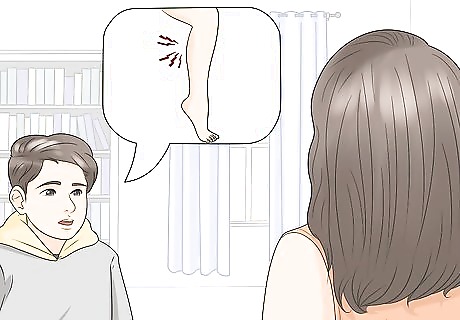
Consider if this is becoming a pattern. If it seems that every Tuesday and Thursday—gym day—little Samuel comes down with a vague leg cramp, it’s probably OK to send him to school. If you honestly can’t tell and it hasn’t been a pattern, go with your gut. If your child really is sick, the school will send them home anyway. If you notice that your child is sick often, but never on the weekends, pay closer attention the next time they claim to be ill.
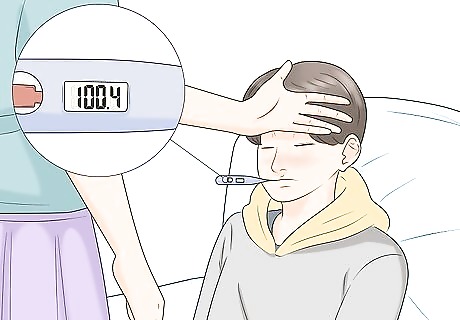
Keep them home from school if they have tangible symptoms. You should not send your child to school if they have a temperature above 100.4 Fahrenheit, vomiting, diarrhea, persistent pain, or a bad, wet cough. Even if you think they are faking their illness, however, you don’t want to send them to school in case they really are sick and contagious! This is not only for your child’s health, but for the health of their teachers and classmates.

Recognize that everyone needs a break sometimes. It’s hard to believe that kids get stressed, but they do! Sometimes the weekend isn’t enough time for them to catch up, especially if they are weighed down with projects. Unexplained symptoms could be a sign of something else. Anxiety, depression, or other issues can sometimes manifest themselves in physical ways. Sometimes it’s best to let them off, even if you know they’re faking. There may be something going on that really scares them from going to school, like friendship problems or bullying.
















Comments
0 comment